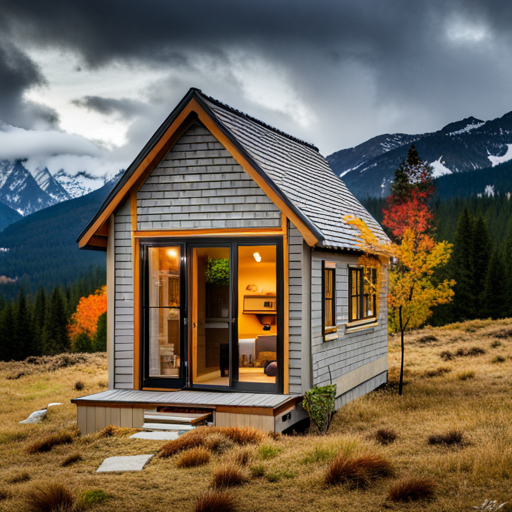What is a Tiny Home? A tiny home is a small living space that is typically between 100-400 square feet in size. These homes are designed to be highly efficient, using minimal resources to provide all the amenities of a traditional home. They can be built on wheels or a foundation, and can be customized to suit a variety of needs and lifestyles.
Who Should Design a Tiny Home? When it comes to designing a tiny home, there are a few different options:
- DIY: Some people choose to design and build their tiny homes themselves, using online resources and guides to help them along the way. This can be a great option for those who are handy and have some construction experience.
- Custom Design: For those who want a more tailored design, working with an architect or builder who specializes in tiny homes can be a great option. They can help you design a space that perfectly fits your needs and lifestyle.
- Pre-Designed Plans: Another option is to use pre-designed plans, which are available from a variety of sources online. This can be a more affordable and accessible option for those who don’t want to start from scratch.
How Much Does a Tiny Home Cost? The cost of a tiny home can vary widely depending on a number of factors, including:
- Size: Larger tiny homes will generally cost more than smaller ones.
- Materials: The cost of building materials can vary significantly depending on the type of materials used and where they are sourced from.
- Customization: The more customized the design, the more expensive the home will generally be.
- Labor: If you hire professionals to design and build your tiny home, this will add to the overall cost.
That being said, here are some general cost estimates for tiny homes:
- DIY: If you choose to build your tiny home yourself, the cost can range from $10,000 to $30,000 or more, depending on the size and complexity of the design.
- Custom Design: Working with an architect or builder can cost anywhere from $50,000 to $150,000 or more, depending on the level of customization and the cost of materials and labor.
- Pre-Designed Plans: Using pre-designed plans can be a more affordable option, with costs ranging from $20,000 to $80,000 or more, depending on the size and complexity of the design.
It’s important to note that these are just general estimates, and the actual cost of your tiny home will depend on a variety of factors.
Top reasons to build a tiny home:
- Affordability: Tiny homes are significantly less expensive than traditional houses, which makes them a great option for people on a budget.
- Mobility: Tiny homes are often built on wheels, which means you can easily move them to a new location if you need to.
- Environmental sustainability: Tiny homes use fewer resources and have a smaller environmental impact than larger homes.
- Minimalism: Tiny homes promote a minimalist lifestyle, which can help reduce stress and increase happiness.
- Customizability: Tiny homes are highly customizable, allowing you to design a living space that perfectly fits your needs.
- Flexibility: Tiny homes can be used for a variety of purposes, including as a primary residence, vacation home, guest house, or rental property.
- Reduced maintenance costs: With a smaller living space, there are fewer maintenance costs to worry about.
- Energy efficiency: Tiny homes require less energy to heat and cool, which can lead to significant savings on utility bills.
- Freedom: Living in a tiny home can free you from the burden of a large mortgage or rent payments, allowing you to pursue your passions and live life on your own terms.
- Creative expression: Designing and building your own tiny home allows you to express your creativity and build something that reflects your personal style.
- Improved quality of life: With fewer possessions and a smaller living space, many people find that they have more time and energy to devote to the things that truly matter.
- Reduced carbon footprint: Tiny homes use fewer resources and have a smaller carbon footprint than larger homes, making them an environmentally friendly option.
- Increased self-sufficiency: Tiny homes often feature off-grid systems such as solar panels and composting toilets, which can increase your self-sufficiency and reduce your reliance on traditional utilities.
- Mobility and travel: Tiny homes on wheels offer the opportunity to travel and explore new places while still enjoying the comforts of home.
- Minimalist lifestyle: Living in a tiny home encourages a minimalist lifestyle, which can help reduce stress, improve mental health, and promote mindfulness.
- Smaller environmental impact: Building a tiny home requires fewer materials and resources than building a traditional home, which can help reduce your environmental impact.
- Low property taxes: Tiny homes often have lower property taxes than larger homes, which can help reduce your overall housing costs.
- Reduced clutter: With limited space, you’re forced to get rid of unnecessary possessions and focus on what’s truly important.
- Simplified life: Living in a tiny home can simplify your life by eliminating the distractions and excess that often come with living in a larger home.
- Creative storage solutions: With limited space, tiny homes often feature creative storage solutions that can help you make the most of your living space.
